Anglagard
Änglagård - Discography [3 Studio Albums] (1992-2012) Music
Posted by gribovar at May 17, 2023
Änglagård - 3 Studio Albums (1992-2012)
EAC Rip | FLAC (tracks/image+.cue+log) - 876 MB | MP3 CBR 320 kbps (LAME 3.93) - 367 MB | Covers - 154 MB
Genre: Progressive Rock | RAR 3% Rec. | Label: Änglagård Records
EAC Rip | FLAC (tracks/image+.cue+log) - 876 MB | MP3 CBR 320 kbps (LAME 3.93) - 367 MB | Covers - 154 MB
Genre: Progressive Rock | RAR 3% Rec. | Label: Änglagård Records
Swedish band Änglagård is part of a whole breed of young progressive rockers who have cut their teeth on King Crimson's Red. Like the other Crimson Swedes, Anekdoten, Änglagård crams angular hooks and start/stop tempos into every moment they can spare. Writing lengthy symphonic pieces, the band sound like many big '70s acts but always play with a very tough sound. Meaty bass and scorched guitar tones duel it out with organ, mellotron, and hyperactive drumming, while folky Swedish singing and flute occasionally break the tension.
Änglagård - Live: Made in Norway (2017) [Blu-ray + DVD5] Music
Posted by v3122 at March 3, 2017
Änglagård - Live: Made in Norway (2017)
Blu-ray: MPEG-4 AVC 16011 kbps, 1080i, 25 fps, 16:9, High Profile 4.1
LPCM 2.0, 1536 kbps / DDD 5.1, 640 kbps / DTS-HD MA 5.1, 4243 kbps, 24-bit
DVD5: PAL 16:9 (720x576) VBR, Auto Pan&Scan | Dolby AC3, 2 ch & 6 ch
Progressive Rock/Sympho-Prog | Änglagård Records | Scans | ~ 22.97 + 4.68 Gb
Blu-ray: MPEG-4 AVC 16011 kbps, 1080i, 25 fps, 16:9, High Profile 4.1
LPCM 2.0, 1536 kbps / DDD 5.1, 640 kbps / DTS-HD MA 5.1, 4243 kbps, 24-bit
DVD5: PAL 16:9 (720x576) VBR, Auto Pan&Scan | Dolby AC3, 2 ch & 6 ch
Progressive Rock/Sympho-Prog | Änglagård Records | Scans | ~ 22.97 + 4.68 Gb
According to Anglagard‘s own discography, playing at Progfest in 1993 was one of their earliest live gigs. The young group at work had just released their first album Hybris and what you hear is a young group at work whose ambition and hunger steamrolled over their few deficiencies. This debut album and its follow up Epilog were two of the first to light a fire under what was a growing revival in the symphonic progressive rock of the 70s…
Anglagard (discography) - Hybris - Epilog - Buried Alive Music
Posted by melloman at April 4, 2008
Anglagard (discography) - Hybris - Epilog - Buried Alive
MP3 256 CBR | 3 CDs | 100 + 85 + 140 MB
Genre: Progressive Rock, Symphonic Rock
MP3 256 CBR | 3 CDs | 100 + 85 + 140 MB
Genre: Progressive Rock, Symphonic Rock
Personally I consider Anglagard's Hybris to be the best Prog album realesed in the 90's. Check yourself!
Änglagård’s sound is rich in mellotron, Hammond and piano, and a brooding wash of guitars and bass/bass pedal accented by Holmgren’s moody and precise flute. The band’s compositions are characterized by long, often instrumental tracks with significant tempo shifts and sometimes intense guitar flourishes. The Epilog album is instrumental in its entirety, and many of the tracks are distinguished by striking passages from Johnson’s grand piano. Early Porcupine Tree also comes to mind, particularly when listening to Epilog. Änglagård deserves a place in the Archives for their admirable effort in carrying the banner of large, expansive symphonic music well into the nineties, with a sound that both pays homage to the great progressive giants of the seventies, and advances that sound with virtuoso accompaniment and expansive, layered compositions.
Änglagård - Prog på svenska: Live in Japan (2014) 2CD Music
Posted by hill0 at May 30, 2015
Änglagård - Prog på svenska: Live in Japan (2014) 2CD
EAC Rip | FLAC (tracks & cue & log) | 501 MB | MP3 CBR 320 kbps | 220 MB | Scans | 42:28 + 44:00
Genre: Instrumental Progressive Rock / Symphonic Prog | Country: Sweden | Anglagard Records | ANG04CD
EAC Rip | FLAC (tracks & cue & log) | 501 MB | MP3 CBR 320 kbps | 220 MB | Scans | 42:28 + 44:00
Genre: Instrumental Progressive Rock / Symphonic Prog | Country: Sweden | Anglagard Records | ANG04CD
In March of 2013, legendary Swedish symphonic progressive rock band, Änglagård played a series of concerts over three nights at the Club Citta, Tokyo, sharing a bill with The Crimson ProjeKCt. Änglagård, now with a revised lineup, present a unique take on progressive rock with influences such as Swedish folk music, old school progressive rock like King Crimson, Genesis, and Dun, and classical music, all wrapped in a very dynamic and symphonic style. Whereas many symphonic prog bands place the rock first and classical second, Änglagård mix the ‘sturm und drang’ of classical music with rock instrumentation such as electric guitar, bass, and synths along side prog rock experimentation.
Änglagård - Prog på svenska - Live in Japan (2014) Music
Posted by gribovar at Dec. 18, 2022
Anglagard - Prog pa svenska - Live in Japan (2014)
EAC Rip | FLAC (tracks+.cue+log) - 492 MB | MP3 CBR 320 kbps (LAME 3.93) - 203 MB | Covers - 22 MB
Genre: Progressive Rock | RAR 3% Rec. | Label: Anglagard Records (ANG04CD)
EAC Rip | FLAC (tracks+.cue+log) - 492 MB | MP3 CBR 320 kbps (LAME 3.93) - 203 MB | Covers - 22 MB
Genre: Progressive Rock | RAR 3% Rec. | Label: Anglagard Records (ANG04CD)
For many prog heads the legendary progressive rock band Änglagård belongs to the best Swedish prog bands. Their music, mostly inspired by King Crimson, certainly contains great moments and their short back catalogue of only three studio albums feature some outstanding pieces.
In March 2013 Änglagård played a series of three concerts at Club Citta, Tokyo in Japan to promote their latest studio album Viljans Öga (2012). At the time they were sharing the bill with The Crimson ProjeKCt. This live CD contains songs from all three studio albums. In addition to the older pieces, you also get one brand new piece on this record, namely Introvertus Fugu, part I, which was previously unreleased. This new piece shows that the band can still write fantastic prog rock tunes!
Änglagård - Buried Alive (1996) Music
Posted by gribovar at April 9, 2019
Anglagard - Buried Alive (1996)
EAC Rip | FLAC (image+.cue+log) - 434 MB | MP3 CBR 320 kbps (LAME 3.93) - 170 MB | Covers - 80 MB
Genre: Progressive Rock | RAR 3% Rec. | Label: Musea (FGBG 4167.AR)
EAC Rip | FLAC (image+.cue+log) - 434 MB | MP3 CBR 320 kbps (LAME 3.93) - 170 MB | Covers - 80 MB
Genre: Progressive Rock | RAR 3% Rec. | Label: Musea (FGBG 4167.AR)
Änglagård is probably the first band of the 90s to have become a legend of Progressive rock, and to have been considered at the same level as the 70s giants. "Buried Alive" is an album that was issued after the split-up and that consists of the almost complete show there, one hour fifteen minutes of 100% instrumental and breathtaking music. Let's just say that the audience could feel privileged to witness such a memorable moment… And this shows on the album! The art of Änglagård can be characterized by a touch of Genesis-like arpeggios, Yes-like virtuosity, some soft flute melodies, a few bits of local folk, sudden Mellotron apparitions and unexpected, violent King Crimson-like moments (Always beautifully controlled and performed). All of this also shows a paradoxically well defined personality mainly due to its quite Scandinavian and immediately recognizable melancholy…
Anglagard - Epilog (1994) 2CD reissue Music
Posted by pr0gger at March 8, 2010
Anglagard - Epilog (1994)
2 CD reissue of 2010
EAC | FLAC tracks +CUE +LOG +600 dpi Full Scans = 308 Mb | RAR 3% | Multiupload (RS+MU+DF+ZSh)
Genre: Progressive Rock | Label: Anglagard Records | Catalog Number: ANG 02
2 CD reissue of 2010
EAC | FLAC tracks +CUE +LOG +600 dpi Full Scans = 308 Mb | RAR 3% | Multiupload (RS+MU+DF+ZSh)
Genre: Progressive Rock | Label: Anglagard Records | Catalog Number: ANG 02
alvarsdotter.com:
This edition has a three-fold digipack with beautiful artwork printed in copper with relief. It also includes an additional CD, containing a short (3:38) bonus track "Rösten". Rösten was written in 1993 but recorded in 2008-2009
Necromonkey - The Albums Collection (2013-2015) Music
Posted by popsakov at Dec. 6, 2019
Necromonkey - The Albums Collection (2013-2015)
4CD | EAC Rip | FLAC (Img) + Cue + Log ~ 1,10 Gb | MP3 CBR320 ~ 458 Mb
Full Scans ~ 492 Mb | 03:10:17 | RAR 5% Recovery
Progressive Rock, Symphonic Rock, Electronic, Experimental | Roth Händle Recordings
4CD | EAC Rip | FLAC (Img) + Cue + Log ~ 1,10 Gb | MP3 CBR320 ~ 458 Mb
Full Scans ~ 492 Mb | 03:10:17 | RAR 5% Recovery
Progressive Rock, Symphonic Rock, Electronic, Experimental | Roth Händle Recordings
Necromonkey is the collaboration between drummer Mattias Olsson who was part of the founding members of swedish band Änglagård, of which he left in 2012, and keyboardist David Lundberg from Gösta Berlings Saga. The two first met in 2008 while working on Gösta Berlings Saga's second album Detta har hänt and thought about working together. 2010 saw the begining of the writing and recording for their first album Necroplex in Olsson's Roth-Händle studios in Stockholm. Their vision was not about making an Änglagård meets Gösta Berlings Saga kind of album but instead focusing on something new which will reflect everything they love in music. Necroplex was released in 2013 and showed how fertile this duo is, making an album deeply rooted in modern electronic but still incorporates a huge amount of acoustic and electric instruments. Olsson and Lundberg both handle most of the instruments, aided by a big line up of session musicians. The two didn't wait long before releasing a second album, A Glimpse Of Possible Endings is already finished and due to be released in 2014.
All Traps on Earth - A Drop of Light (2018) Music
Posted by gribovar at March 16, 2023
All Traps on Earth - A Drop of Light (2018)
EAC Rip | FLAC (tracks+.cue+log) - 327 MB | MP3 CBR 320 kbps (LAME 3.93) - 150 MB | Covers - 134 MB
Genre: Progressive Rock | RAR 3% Rec. | Label: AMS Records (AMS 300 CD)
EAC Rip | FLAC (tracks+.cue+log) - 327 MB | MP3 CBR 320 kbps (LAME 3.93) - 150 MB | Covers - 134 MB
Genre: Progressive Rock | RAR 3% Rec. | Label: AMS Records (AMS 300 CD)
Take a modern progressive rock fan and let him listen to the first notes of "A Drop of Light", debut album from a new project called All Traps on Earth: we have no doubt that it will take him a few seconds only to recall a name that has become a legend of Scandinavian symphonic prog: Änglagård! As a matter of fact, All Traps on Earth is the name chosen by Änglagård's founding member and bassist Johan Brand for this project of his, involving keyboard player Thomas Johnson and drummer / percussionist Erik Hammarström from the same 'source band'. They are joined by Johan's talented daughter, Miranda Brand on vocals, as well as a plethora of guests from the Swedish scene…
Pär Lindh Project - Gothic Impressions [1994] Music
Posted by Woolly at April 18, 2008
Pär Lindh Project - Gothic Impressions [1994]
MP3 320 kbps | Symphonic Prog | ~130 MB
MP3 320 kbps | Symphonic Prog | ~130 MB
One of the people responsible for the Swedish prog revival of the '90s is Pär Lindh, a professional classical musician who grew up listening to prog rock in the '70s. Lindh was a member of the Royal Swedish Chamber Orchestra for four years before delving into progressive rock on a professional level, and he is a genuinely talented, sincere musician who does everything with a sense of integrity. Most people who bought this debut album probably did so because several members of the tragically short-lived but already legendary Swedish band Änglagård play on this album. Their performances are good, but anyone who expects this album to sound like Änglagård is likely to be sadly disappointed. …
![Änglagård - Discography [3 Studio Albums] (1992-2012)](https://pixhost.icu/avaxhome/ac/37/006437ac_medium.jpg)
![Änglagård - Live: Made in Norway (2017) [Blu-ray + DVD5]](https://pixhost.icu/avaxhome/21/cf/0043cf21_medium.jpg)

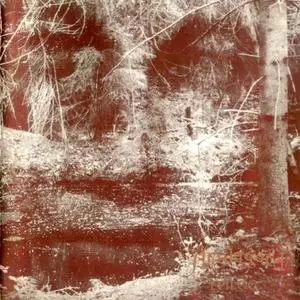
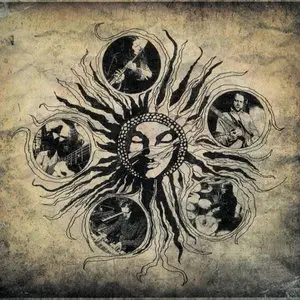
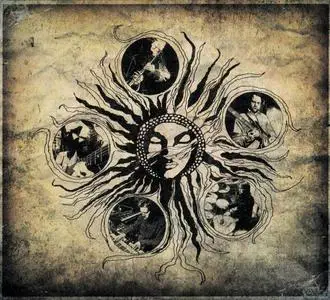
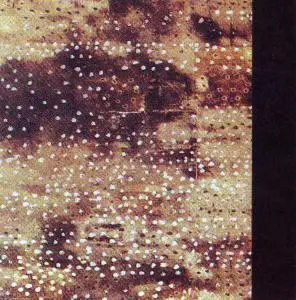
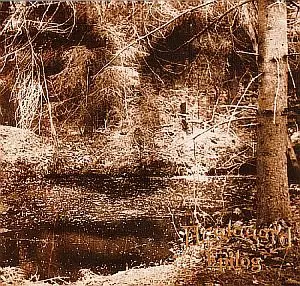
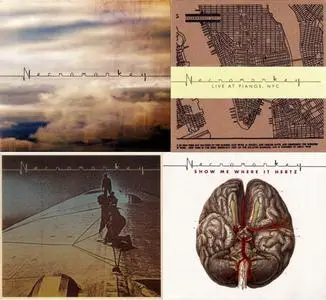
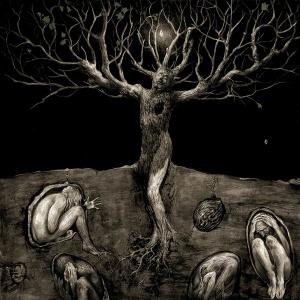
![Pär Lindh Project - Gothic Impressions [1994]](https://pixhost.icu/avaxhome/fd/f7/0006f7fd_medium.jpg)